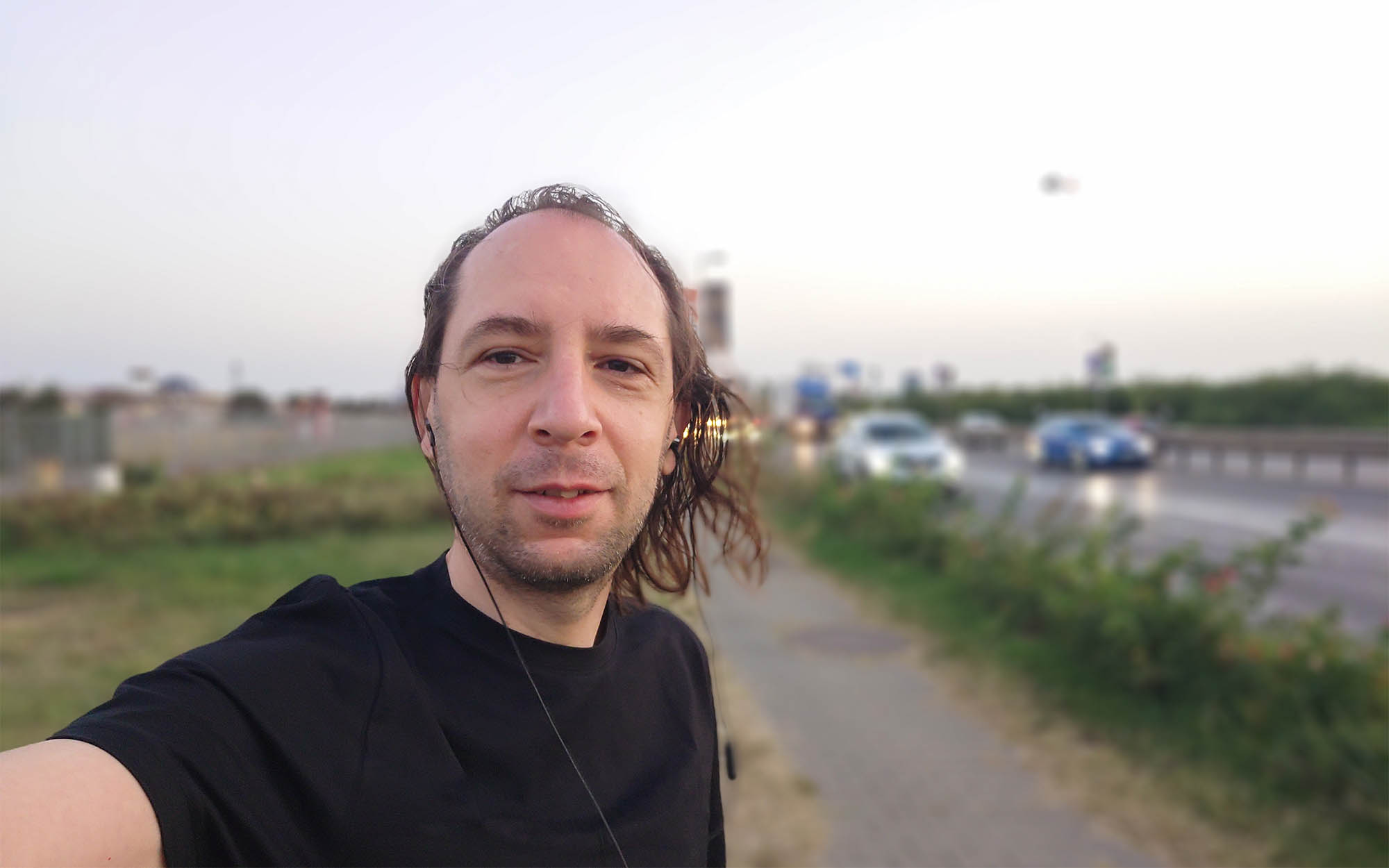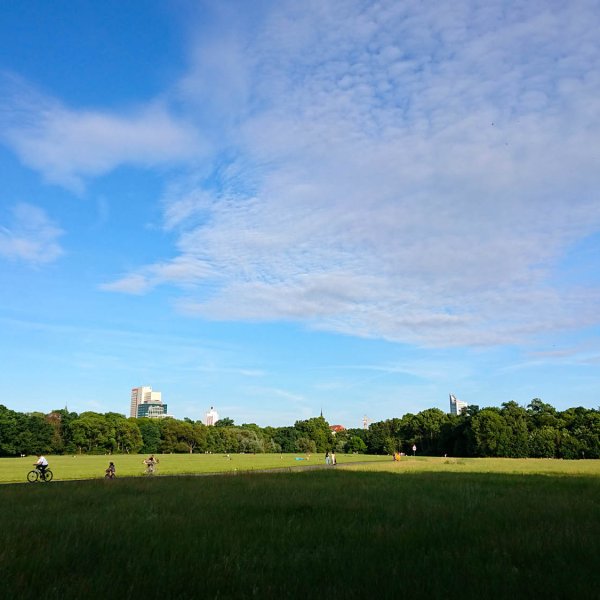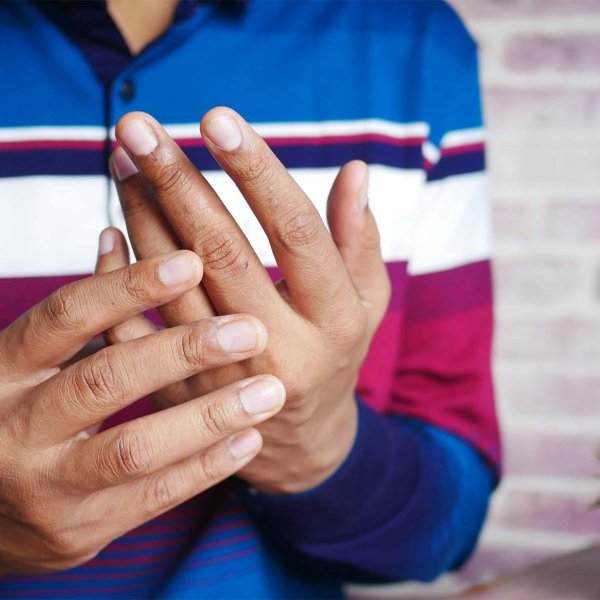JUMP TO
In the first part of this series, we’ve learned about eye health, eye doctors and common vision problems. Now we’ll discuss in detail all the factors that may create problems with your eyesight, and we’ll focus on practical solutions to help you manage and improve your eyesight health.
Causes of poor eyesight and practical solutions
Let’s look at some of the possible causes for developing poor vision (short term or long term) in the area of refractive errors. Note that we’ll discuss each of these causes for poor eyesight in detail and I’ll also share with you my solutions for improving your vision by addressing the root cause of the problem.
The main causes for poor eyesights and hence the need for glasses are:
- Not enough natural light
- All kinds of stressors (physical, chemical and emotional)
- Emotional stress in particular is a powerful negative factor
- Poor indoor light situation
- Cloudy or constantly changing weather
- Problematic living arrangements
- Winter season
- Low quality digital screens
- Small text and poor light conditions
- Too much use of the eyes
- A diet low in whole foods
- Not enough exercise or movement
Let’s take these factors one by one, discussing what they actually mean, how they influence vision and how you can minimize the negative impact on your eyes’ health.
Not enough natural light
Our eyes need natural light in order to perform optimally. This is the way our eyes are designed to function, this is the way our body is designed and so natural light is very important when it comes to eye health.
Unfortunately, in our modern society we don’t give natural light the importance it deserves. We don’t spend enough time outside in natural light, we don’t have big windows either at work or at home, we don’t use natural light for reading or writing as we should do. We don’t sunbath enough, especially in the colder seasons when there is less natural light overall and the light intensity is not high.
Practical Solutions
- Make sure that you expose your eyes to natural light as much as possible, especially in the morning after waking up.
- Take a short walk outside in the first hours upon waking up. This is very important since it will “adjust” your eyes, and it’s mandatory in the winter season when there isn’t much natural light indoors anyway.
- Spend as much time outside as possible, no matter if it’s sunny or cloudy weather.
- Choose a place to live that has good natural light all day long. It’s best to choose a place that is facing the sunset, since in the evening we are usually tired and so we need natural light as much as possible.
- Avoid living in apartments orientated towards north or towards indoor settings, since this will make it impossible to get natural light in the cold season.
- Avoid reading small text where there is no natural light (eg: offices without natural light, supermarkets, etc).
- Choose to read your book or newspaper in the park, or at least seated near a window.
- In the winter season, choose not to block the windows with drapes or curtains, or use thin drapes designed for the winter season.
All kinds of stress and emotional stress particularly
Chronic stress is the main cause for all kinds of diseases and this means that stress can also influence your eyes, being responsible for eye fatigue and other more serious conditions. Prolonged stress will lead to tension in the eyes muscles and ultimately to developing refractive errors.
Think about this: you’re stressed, you make unhealthy choices (food, sleep, toxins, etc), weakening your immune system and your whole body, which in turn will lead to disease. The same logic is true when it comes to eye disorders, especially to the most common vision problems like refractive errors. Refractive errors are linked to prolonged tension and imbalances in the eye muscles which can be caused or altered by emotional stress.
How stress can affect your eyes
- When you’re stressed (especially during high emotional stress) your eyes will become alert and will start to focus continuously.
- Stress can also lead to tiredness and not enough sleep, which in turn leads to eye fatigue. You can recognize this by the fact that your eyes will start to hurt or you’ll develop sore eyes.
- Emotional stress can lead to eyestrain, which is basically a physical stress on the eye muscles.
- Prolonged tension in the eyes muscles and not enough brakes from constant stimuli will keep your eye muscles in the same state of imbalance, prolonging refractive errors.
- Living in survival mode, which is another term for chronic stress, will break-down your body with time, since your body won’t be able to regenerate during sleep. Simply living in a state of stress daily can lead to developing all sorts of eye related problems, from tensioning of your eye muscles to more serious conditions that can lead to blindness.
- Physical stress is another factor that can influence your vision. For instance, poor light or even too much artificial light can lead to eyestrain. The same is true when using digital screens or devices such as VR devices, consoles of all kinds, mobile gaming, etc.
- Another type of physical stress can be an injury or misaligned vertebrae in the cervical area of your spine. All organs have connections in the spine, the eyes are no exception. Any kind of injury or misalignment of the spine can be diagnosed and adjusted by a chiropractor.
- Chemical stress is related to substances that can affect your eyes. We won’t go into many details here but know that dust and working in dusty areas can lead to chemical stress of the eye.
- Chemical stress is also related to the food that you are eating and the culprit here are most carbs, especially simple sugars. Carbs will give you sugar spikes, after which insulin will be generated into the blood and you’ll become sleepy. This kind of up and down sugar rollercoaster can also manifest in your eyes as a kind of weakening of your vision, especially in the cold season or at night, when you’re not exposed to enough natural light.
Practical Solutions
- Avoid all kinds of stress (physical, chemical and emotional) – easier said than done, right?!
- Relax your mind by means of meditation, getting outside, walking in the park, listening to audiobooks or calming music.
- Take long walks especially in the morning after waking up and in the evening before going to bed.
- Learn how to relax your eyes by changing the focus from near to far. Near focus means 1 meter or less, while focusing far away means at least 7-10 meters, or even focusing at 20-50 meters. Do this for a few minutes at least 10 times/day.
- Take breaks from work every 25 minutes, making sure to get up from your office and walk around for a few minutes.
- Use a work management system like Pomodoro (25 min work time / 5 min pause time) in order to take scheduled brakes.
- While taking breaks, make sure to remove or close all stressors around you – think phone, computer, book, screens close to eyes, etc.
- One of the best ways to relax your eyes is to surround yourself with natural light or to have a big window that you can look at while taking a break.
- Close your eyes and visualize a peaceful picture in your mind. If there is too much light around, use your palms to cover both of your eyes in a cross-like fashion.
- With your eyes closed, relax your eyes muscles in order to release tension stored in the eyes. How do you know if tension is stored in your eyes? Observe if your eyes hurt or if they feel tired or solid.
- Here’s a simple exercise that you can do – When you’re outside, sit on a bench or anywhere else and close your eyes. Envision yourself receiving a wave of sunlight energy towards both of your eyes and your whole body. Stay like this for a few minutes, making sure to observe if there is any kind of tension in your eyes. Mentally release that tension and let go of any kind of worries and stress energy stored in your eyes.
Poor indoor lighting situation
This can be related to a few things:
- not enough windows to let natural light in
- low ceiling leading to bad light propagation inside the room
- poor design of indoor lights
Let’s take them one by one, discussing practical solution for each of them:
Not enough windows or low ceiling
Depending on the area of the globe where you live, as well as the time of the year, light will enter your house at different angles and with different intensities. Plus there will always be more light in the summertime and less light (and light intensity) in the winter season.
I discovered that it’s very important to live in a house or apartment where you have enough natural light, especially in winter time. Enough light intensity simply means that you feel comfortable (physically and emotionally) and that you can read a book using natural light. If your eyes feel tired all the time when you’re at home, your light situation may not probably be that great.
Poor design of indoor lights
This is a very common situation found in many living spaces. Here are a few possible scenarios and solutions to tackle this problem:
- Poor light distribution. You don’t have enough light sources and instead you’re using one of two sources that emit either too much light or not enough overall light.
- Too much light intensity. You may have light sources that are too powerful in terms of emitted light (light intensity, lux).
- Are you using blue light bulbs? You may be using blue light bulbs and/or low-quality bulbs that can create an unpleasant or cold light situation.
- Lights that flicker. Led lights or fluorescent light can flicker, especially those that are low priced or low-quality.
- Learn how to illuminate your house with different types of lamps, using yellow bulbs of different intensities.
- Learn the importance of light design (light vs shadow) and how to use lamps in order to light-design a space.
- When deciding on what kind of lights to use, take into consideration the color of the walls and floors (these can either reflect or absorb light).
Cloudy or constantly changing weather
If you live in a place where there is cloudy weather most of the year (such as Northern regions of Europe and America), you’re at risk of developing eyestrain, which can trigger the need for glasses. Especially if we’re talking about thick clouds, like the ones found in Scandinavia, then things can get pretty bad for one’s eyes.
Problems with having constant clouds
- Less available light due to clouds – Having less natural light leads to stress on the eyes (eyestrain), especially if you work indoors and have tiny windows.
- Low contrast due to clouds – Cloudy weather means there are no shadows and with less light available, it will be harder for your eyes to focus between objects.
- Clouds reflect some of the light – This is great for photographers but looking directly at the clouds will be like looking directly into a light bulb, creating eyestrain.
- Moving clouds can be problematic – In Scandinavia it’s very common to have low altitude moving clouds, meaning that one moment you will see the sun and the next moment you’ll end-up with not enough light. This is problematic and can lead to constant strain of the eyes. The solution is to be present and aware of what is happening, instead of focusing your eyes constantly.
Practical Solutions
- Take more breaks and relax your eyes more often when there is cloudy weather outside.
- Do more work outside in natural light instead of inside, or at least work near a big window.
- Make sure to spend a few hours outside in natural light, especially in the winter season.
- Move your work space closer to a window where you have natural light available.
- If you’re working at the computer, make sure to let natural light hit your desk from the side, not the front. Having light directly in front of you will compete with the light emitted from the computer screen, and this can lead to eyestrain.
- Choose rooms with high ceilings and this will create a better light distribution.
- Choose rooms at top floors where there is more natural light available, even on cloudy days.
- When you feel that your eyes are tired, simply take a break and be aware of the situation.
- Do not force your eyes into focusing, especially if they hurt. Be aware of the time when you may be squinting in an attempt to see more clearly, this is a clue for eyes that are tired.
Problematic living arrangements
It used to be a struggle for me every time I had to rent a place. I wasn’t the kind of person that could just rent a place online. At first, this was frustrating but since I became a health coach, I realized I was doing it correctly and all the others were doing it wrong.
The place we live in, the home we spend so many hours of our lives in has to have a certain standard in order to accommodate a healthy life. Light affects our mood, our decisions, and our health. I believe that everyone should understand that our place of living has a big impact on our health.
Let’s see what are some tips that you can use when choosing a place to live.
Practical Solutions
- Choose an apartment or house with big rooms and a high ceiling. This way you’ll end-up with better light distribution, both natural and indoor light.
- Ideally choose a place facing SW (south-west) and never N (north). This way you’ll have more natural light during the afternoon, in all seasons.
- Use blinds to protect yourself from excessive light, especially in the summertime or when the sun is very low at sunset.
- Choose a high floor. This will allow more natural light to enter your place of living, especially in the winter season.
- Beware of having a big balcony on the floor above, this will act as a kind of blocker for natural light. You’ll end-up having less natural light, especially in winter when the sun is down most of the time.
- Ideally choose a place with a garden. This way you’ll be able to easily go outside in the morning to sunbath, or simply relax your eyes after waking up.
Winter season
We know that in the winter times the days are shorter but that’s not even half of the problem. For me, the hard part is that, in the winter season the sun is “down” most of the time. Depending on how far up north you live, the sun can be really down even at mid-day.
Putting this another way, in winter time the sun gives less light compared to the summer. Not only because the days are shorter, but also because of the way the sun travels on its path from sunrise to sunset.
We simply cannot expect to use our eyes in the winter time at the same work intensity as in the summertime. Less light in the winter means that one needs to take it easier when it comes to using their eyes, otherwise the eyes will suffer, developing tension which leads to eyestrain, and ultimately to refractive errors and the need for glasses.
Practical Solutions
- Reserve more time for the same activity in winter vs summer, especially when it comes to using your eyes intensively.
- Do most eye intensive work at mid-day since that’s the time with the best natural light.
- Relax your eyes more, take breaks more often compared to summertime.
- Make sure to use natural light as much as possible and this means planning your work day around natural light.
- Make sure to get outside in the morning every day, as this is one of the best ways to accommodate your eyes with natural light. Think of this as a way to calibrate your eyes.
- Take the time to relax your eyes and do all those relaxation exercises that we’ve talked about in previous sections.
- Learn to “listen” to what your eyes are telling you. Be present and alert, but do not be stressed or tense. If your eyes are telling you that you are tired, stop and close your eyes.
Low quality digital screens
These days we are surrounded by all kinds of devices and we use our eyes from morning until evening, and even before sleep (I don’t recommend this). The screens that we use play an important role in the eyes-health equation.
The good news is that there are a few simple guidelines that you can follow, that I always follow, guidelines that will help you to minimize the impact that these screens could have on the eyes.
Problems with digital screens
Low-quality screens can be “ok” for people with excellent vision (at least for a while) but can be totally damaging for people with vision problems, or for people with so-called normal vision (people like you and me). Sometimes you look at a screen and you just can’t easily keep your focus, or the screen makes your eyes very tired very fast, or maybe you feel like you need more brightness after a certain time of using a device.
One note related to contrast – Contrast refers to the black level of your screen. Simply put, contrast is the difference between black and white. Good contrast means that the black color is represented as pure black and not a shade or grey. When it comes to white, the same is true: white should be represented as pure white and not as a shade of grey. An image with good contrast refers to an image that has enough blacks and whites so that there is a clear difference between tone levels.
All of these perceptions are related to using low-quality digital screens. The solution? Avoid these low-quality screens at all costs!
Practical Solutions
- Choose IPS or OLED screens instead of the cheap TFT screens.
- Choose a screen that has no PWM or a high PWM number (PWM states for frequency used to adjust brightness and it is basically a type of high-speed flicker used for adjusting the brightness). Avoid!
- Choose high-density pixel screens, also called Retina screens (see producers specs). These screens have double the pixels ratio compared to your average screen. The more pixels per inch we use to display an image, the more clear and sharp it will appear when seen on a screen. The more clear an image appears, the easier it is for our eyes and brain to interpret it.
- Using a screen at maximum brightness will create the hollow effect on the eyes, so keep brightness to a minimum.
- Know that brightness is always dependent on the light around you. You’ll need more brightness when using the screen in day time and less brightness at night.
- Here’s a small trick related to brightness: Always remember the brightness settings that you feel comfortable with and use those as a guideline to know when your eyes are tired, needing a break. If you feel like you need more brightness in order to read the screen, but at the same time you know that you will go above your normal brightness level, that is a clear indication that your eyes may need a break.
- Feeling the need to keep the brightness level very high or at maximum can mean 2 things: you either have a screen that has its maximum brightness too low or your eyes are very tired, demanding more light. Change the screen and/or relax your eyes.
- Screens with low contrast must be avoided at all times.
- Cheap devices always have bad screens.
- Identify quality screens by looking at how good they represent the color spectrum (look at screen tests done by professionals).
- In case tech is not your friend, just go and buy one of the most expensive devices as those always have great quality screens.
- Get a brighter screen with good contrast but don’t use it at max brightness, unless you work outside.
- Did you know that OLED screens have infinite contrast? This means that they have better theoretical contrast compared to all other types of screens.
- Choose to use an operating system or an app that renders thicker fonts, this way you’ll be able to relax your eyes easier since thick fonts are easier to read.
- Learn how to adjust your screen’s contrast from the settings panel.
- Know that laptops always have lower quality screens compared to using an external display.
- Some low quality screens have a parameter called “viewing angle” which basically refers to this: You’ll always get better contrast when looking directly perpendicular to the screen, compared to looking from an angle.
- Consider using a tablet instead of a laptop. Reading a document on a tablet allows you to easily adjust the reading angle.
- Use a tablet instead of your phone, since tables have bigger screens.
- Avoid using digital devices in a completely dark room. In the event that your eyes are tired or you may feel there isn’t enough contrast, increasing the brightness level will make your eyes even more tired.
- Avoid blue light and blue light emitting screens. Use an app like f.lux to avoid blue light in the evening, turning your screen into an orange tint. Operating systems now have a setting called “Night Shift” which basically does the same. Allow your brain a few minutes to adapt to the orange tint.
Small text and poor light conditions
In the last few years I noticed an increased use of small prints on all kinds of devices. This is also true for food packaging, books, magazines and other things to read. Believe it or not, many people get glasses just because it’s easier for them to get around in poor indoor light conditions while reading small print text. Unfortunately this isn’t a healthy solution and can lead to eyestrain and more serious eye-related problems in the near future.
Practical Solutions
- Don’t read the small print at all.
- Take a picture with your phone and read that text on the phone.
- Use a magnifier glass (classic or digital).
- Use a flashlight to add more light while reading all kinds of small texts.
- Avoid using fonts marked as “thin” or “light” when working with digital documents.
- Always remember that it’s easier to read small prints in natural light.
- Use a dedicated reading lamp for book reading.
- Stop whenever you feel tired.
- Relax your eyes in the evening by using a room lamp with warm light and read your evening book under that light.
- Perform exercises to relax your eyes (see other sections above).
Too much use of the eyes
We all know that feeling when we simply feel the need to close our eyes for a minute or two. Or sometimes our eyes feel hard or may even hurt. What is described above literally means that your eye muscles are exhausted and that it’s time to relax them.
Practical Solutions
- Remove all stressors from your environment.
- Close all the lights and relax your eyes.
- Close your eyes and meditate a bit.
- Close your eyes and try to see if they feel tense. Relax with your eyes closed.
- Perform eye relaxation exercises.
- When you take a break, walk away from your desk.
- Learn to relax your eyes with natural light (eyes close, look at the sun for a few seconds).
- Change focus exercise – Alternate focus a few seconds between far and near focus. Do not tense your eyes in the process.
- Lear how to read with your eyes relaxed – We read both with the eyes but also with the mind, think about this!
- Know that vision takes place in the mind, not in the eyes.The eyes are simply a “sensor”, and this means that you can read books even if you don’t have perfect vision.
A diet low in whole foods
There is a lot to say about eating, but the most important thing you can do is to support your eye health by consuming natural foods. I’ve written several articles on this topic so I won’t repeat many of the details here. The important thing to keep in mind is to eat whole unprocessed foods.
Practical Solutions
- Avoid all processed foods.
- Avoid foods with refined seed oils and refined sugar.
- Eat lots of plants, especially vegetables and greens.
- Keep sweet fruits to a minimum.
- Eat a low-carb diet, rich in whole unprocessed foods.
- Consume as many raw plants as possible, in salads, smoothies, smoothie bowls or desserts.
- Consume plenty of healthy fats, especially from plant-based sources like avocado, coconut, olives, nuts and seeds.
- Eat less to no meat, since meat is hard to digest.
- Don’t eat too much, eat just enough to support your activities.
- Don’t eat if you’re not hungry, and certainly do not eat emotionally or out of impulse.
- Pay special attention to the way you chew food. Take small bites and chew for 20-30 times before swallowing.
- Drink plain water, naturally fermented wine or beer. Stay away from all kinds of processed drinks, including so-called “natural” juices.
Check-out all my articles related to making [healthy food choices].
Not enough exercise or movement
Believe it or not, tension in the eyes is linked to tension in your posture, but also your neck, back, shoulders, arms and lower back muscles. In order to have healthy eyes and good vision, you need to have healthy blood, muscle mass, low fat percentage and basically a healthy lifestyle.
Practical Solutions
- Develop a simple training routine to keep yourself active.
- You don’t need to train with weights, go to a gym or take supplements.
- Train at home using simple bodyweight exercises.
- Take walks in nature or in a park, stay away from visual stimuli like digital screens. Walk at least 3-5 km/day and just relax your eyesight.
- You can listen to audiobooks while walking, but do not take care of business when you should be walking and/or meditating.
- Meditate and keep calm as part of a gratitude routine to relax your mind.
- A relaxed mind will translate into having relaxed eyes and sharper vision.
- Walking, meditation, simple exercises, walks in nature, all of these are part of the way you nourish your body and mind.
- Do not supplement with sugar or sugar-based products. In fact, you don’t even need supplements for this kind of normal decent training routine.
The Bottom Line on Eye Health
I like the phrase “Sometimes Less is More” and I believe this is so true when it comes to our eyes.
It’s ok not to see everything.
It’s ok to need more light (especially natural light) in order to perform various tasks.
It’s ok to use every “trick in the book” in order to protect your eyes from eye fatigue.
It’s ok not to see very small fonts.
It’s ok to use every “trick” in order to relax your eyes when using a digital screen – zoom, pan, increase font, adjust contrast, contrast in lights vs screen, etc.
It’s ok to adjust the brightness of the screen that you’re working on depending on the situation (how tired you are, time of day, digital content, location, environment).
It’s ok to feel the need to spend time outside in natural light.
It’s ok to work from a bench in the park instead of an office that has no natural light.
It’s ok to close your eyes from time to time and just relax.
It’s ok to take breaks.
It’s ok to finish the work tomorrow.
Allow your body and your eyes to rest on a regular basis.
Allow your mind to just stop thinking, then close your eyes and just breathe for a few minutes. Release the mental tension stored in your eyes.
Acknowledge that we use our eyes far more than they were designed to be used, especially in these times of extremes.
Don’t listen to others, learn to listen to what your eyes are telling you. Your eyes will always let you know when they had enough stimulation for one day.
Stay positive and have patience, things will change for the better. Sometimes it may take more time but do not lose faith.
That was it for the second part of this article. If you haven’t already, please read the first part of this series.
I’m curious to know what eye related challenges you’ve had or have? Have you found this article useful? Let’s chat in the comments!




















